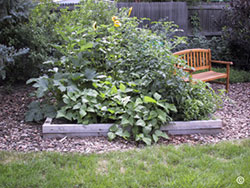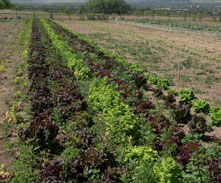
What should I consider when starting a home garden?
To choose the best method of setting up a home garden, consider the type of soil in the garden plot. Native top soils in the west can range from light, sandy soils to heavier clays, or to adobe types that dry like concrete. These soils are commonly found in new housing developments, where all the topsoil often has been removed, leaving only the clay subsoil.
Does soil play a role in what I should do for my garden?
If the soil falls somewhere between a loose, sandy soil and a rich, deep loam soil, planting a garden in rows can be simple, inexpensive and quick. Water row gardens by flood irrigation in furrows, or use sprinklers or drip irrigation.
How can I improve my soil?

To improve any soil for planting, mix into the soil to one and one-half feet. This process can quickly improve drainage, encourage plant roots to grow deeper and improve soil aeration. Organic material will hold moisture and, as it is broken down in the soil, release nitrogen and help beneficial organisms that live in soil.
When is a raised bed the best answer?
For heavy, clay soils, or soils with poor drainage, raised beds are the answer. Raised beds save space, drain faster, heat up earlier in the spring, and save water by keeping it where the plants are growing. Also, because gardeners walk around raised beds rather than on the soil, the soils are kept loose.
What are the benefits of raised beds?
Raised beds offer other advantages. They are more comfortable to work on than row plantings and can be designed to be accessible from a wheelchair. Raised beds can offer a solution to gardeners with small yards and limited spaces.
For more information, see the following Colorado State University Extension fact sheet(s).
- Vegetable garden: Soil Management and Fertilization
- Choosing a Soil Amendment
- Perennial Gardening
- Irrigation Water Quality Criteria



